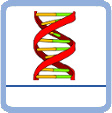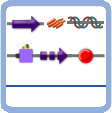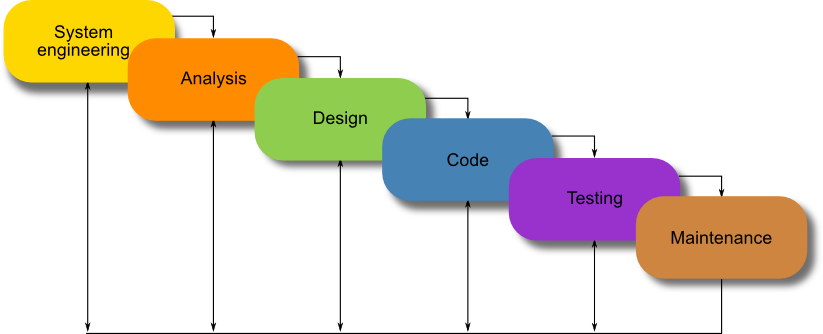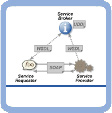Team:Newcastle/E-Science
From 2010.igem.org
(→Web Services:) |
(→Workflows:) |
||
| Line 88: | Line 88: | ||
[[Image:Newcastle_workflows_Workflow.jpg|thumb|left]] | [[Image:Newcastle_workflows_Workflow.jpg|thumb|left]] | ||
| - | A workflow can be described as a sequence of connected steps or work activities that are followed to produce a required outcome. The sequence and the ways the steps impact on each other are regulated by a set of rules (DiCaterino et al., 1997 | + | A workflow can be described as a sequence of connected steps or work activities that are followed to produce a required outcome. The sequence and the ways the steps impact on each other are regulated by a set of rules (DiCaterino et al., 1997 ). |
The processing of the information drawn from all the distributed sources can be accomplished using workflows. | The processing of the information drawn from all the distributed sources can be accomplished using workflows. | ||
Revision as of 21:27, 17 October 2010

| |||||||||||||
| |||||||||||||
Contents |
Motivation:
Synthetic Biology is the engineering of biological entities to perform novel and desirable functions. Synthetic biologists already make use of computational resources to a large extent which can be seen by the software tools such as CLONEQC, Biskit and Internet based repositories such as the MIT Biobrick library at http://partsregistry.org/Main_Page. In both Systems and Synthetic Biology analysis consists of researchers taking the outputs from some software and feeding it to the inputs of other software. This pipeline or workflow can be computerised by using software such as Taverna. Research into the application of computerised workflows to Synthetic Biology has revealed the paucity of published material in this area. Therefore, this has been identified as an opportunity for research and possible development of tools, which could greatly enhance methodologies and workflows in Synthetic Biology. We show how an e-Science approach, i.e. the utilisation of advanced computing resources and technologies to support scientists, benefits the Synthetic Biology engineering process. We further propose a development life-cycle and show how this approach can improve the design of synthetic biological entities.Introduction:
Aim: The aim of this project was to investigate the application of e-Science approaches in Synthetic Biology, particularly workflows.
Objectives:
- To produce a proof-of-concept web service that can be used by a workflow to automate the process of designing a BioBrick.
- To produce one or more Taverna workflows, that use this web service, to show how this e-Science approach will benefit the design process (Oinn et al., 2006; Hull et al., 2006) and reduce development time.
- To produce simulatable model parts in CellML, that could eventually be compiled into a complex model.
- To identify design patterns or motifs which are recognisable patterns in models that can be re-used and simulated independently of the rest of the model. Identifying these motifs should aid the design process and produce re-usable parts to simplify future designs. In principle, the motifs are similar to and serves the same purpose as design patterns in computer software.
Synthetic Biology:
Chopra defines Syntehtic Biology as a field that involves the synthesis of novel biological systems which are not generally found in nature (Chopra and Kamma, 2006).
Engineering Principles:
Two design approaches to Synthetic biology are emerging, namely top-down and bottom up.
The top-down approach starts with an overview of a system. The system is studied and iteratively broken into modules until the complete system can be described in terms of minimal elements. In the bottom-up approach design starts with minimal elements that, according to certain rules, can fit together like Lego c bricks (http://lego.com) until a complete system is built (Heinemann and Panke, 2006).
Synthetic biologists are adopting principles from established fields of engineering to increase tractability and speed of design (Andrianantoandro et al., 2006).
We define Synthetic Biology as: Synthetic Biology is the engineering of biological systems to perform desirable and predictable functions.
Modelling languages:
Systems Biology Markup Language (SBML) was developed to represent biochemical reaction networks in a way that can be used by different software systems to exchange models ().
CellML is a mark-up language used to store and exchange computer based mathematical models. Originally it was intended for the description of biological models, but it has been adopted by several other fields of study.
Both CellML and SBML are based on the XML (Hucka, 2003; Cuellar et al., 2003). The main difference between SMBL and CellML is that in CellML the underlying mathematics of cellular models are described in a very general way.
Virtual Parts:
Cooling et al. (2010) introduce the concept of Standard Virtual Biological Parts (further on referred to as virtual parts). Virtual parts are mathematical models used to represent biological parts that can be combined to inform system design.
The use of virtual parts, however, goes beyond just the representation of biological parts. The virtual parts can also be used to represent bioenvironmental elements which are intracellular events occurring in cells or chassis. These bioenvironmental elements become interfacing parts that act as "glue" for the aggregation of the standard biological parts.
We refer to the standard biological parts as physical parts and the interfacing parts as non-physical parts.
Development Life Cycle:
Another concept, that can be borrowed from software engineering, is the software development life cycle (SDLC). We used, as a basis, what is known as the classic life-cycle paradigm or waterfall model, see Figure 2.
e-Science:
"The term 'e-Science' denotes the systematic development of research methods that exploit advanced computational thinking" Professor Malcolm Atkinson, eScience Envoy
e-Science is an enabling concept. It aims to allow the sharing of resources required in science across administrative borders.
Sharing is accomplished by tapping into techniques such as cloud and grid computing.
Web Services:
Web services are set apart from other types of services by the communications protocol they use. To be part of what is known as the Web, using HyperText Transfer Protocol (HTTP) is a prerequisite.
Web services, regardless of the architecture chosen, enable programmatic access to on-line resources and therefore more and more services are developed and become available on-line.
SOAP web services: The Simple Object Access Protocol, or SOAP as it is popularly known was originally designed to be a RPC (Remote Procedure Call) protocol using HTTP as the transport protocol. It was later extended to allow for other transport protocols such as the Simple Mail Transport Protocol (SMTP) (Kennard and Stiver, 2000). SOAP is a packaging protocol for sharing messages between applications (Snell, 2001).
RESTful web services: Roy Fielding described REST, Representational State Transfer, a software architectural style (Fielding and Fielding, 2000). REST uses the WWW as a starting point. Fielding refers to the WWW as the Null Style. As such it is an ideal architecture for web services.
Workflows:
A workflow can be described as a sequence of connected steps or work activities that are followed to produce a required outcome. The sequence and the ways the steps impact on each other are regulated by a set of rules (DiCaterino et al., 1997 ).
The processing of the information drawn from all the distributed sources can be accomplished using workflows. To manage the complex and heterogenous nature of such a distributed environment, scientist have turned to computerised workflows.
 
|
 "
"








